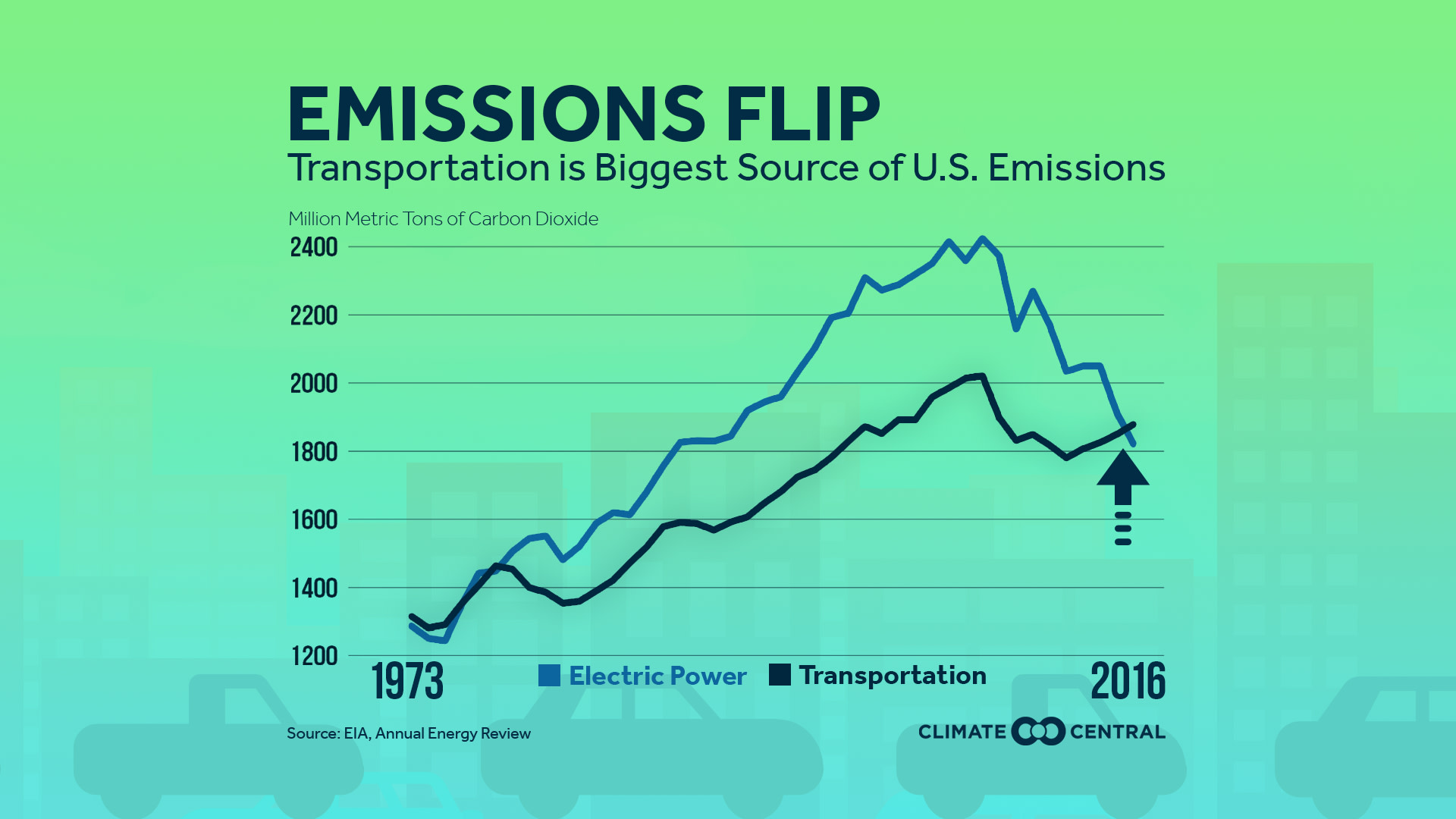The busiest travel day of the year brings a renewed focus on transportation, and for the first time since the 1970s, U.S. carbon dioxide emissions from transportation have eclipsed emissions from electricity generation as the top source of greenhouse gases.
The change comes as U.S. electricity generation relies less on coal and more on renewables and natural gas (a less carbon-intensive fossil fuel). Transportation emissions have also declined from a peak in 2008 due to steadily improving fuel economies, although there has been a small uptick recently as a result of a drop in gas prices. The projected growth in electric vehicles suggests decreases in CO2 transportation emissions are on the horizon. Even when accounting for how electricity is generated, an electric vehicle emits less carbon dioxide than a comparable gasoline car in a majority of U.S. states.
A typical gasoline-powered passenger car emits 20 pounds of carbon dioxide for each gallon of gas burned, and about a pound for each mile traveled. Many electric and hybrid vehicles can cut back on those emissions. A recent Climate Central report, Climate Friendly Cars, shows which cars are the most climate friendly in each state. The rankings are based on the type of engine and the method in which electricity is generated in each state.
From 2011 to 2016, the number of plug-in electric vehicles sold each year in the U.S. increased by a factor of eight. Projections for electric car sales vary among organizations, but all indicate a substantial increase in plug-in electric car sales in the coming years.
Traveling longer distances with electric vehicles is getting easier, as the number of publicly available charging stations has tripled since 2012, with 35,000 in place through 2016. And for those in a hurry, the number of fast charging stations, which can charge a battery most of the way full in about 30 minutes, has also tripled in that same time, with more than 5300 installed. However, America is playing catch up to China, which had 17 times more fast chargers than the U.S. at the end of 2016.
Methodology: Emissions data come from the U.S. EPA and the U.S Energy Information Administration. Sales of electric car data come from the International Energy Agency.
